AudioCulture
The noisy library of New Zealand music
Te pātaka korihi o ngā puoro o Aotearoa
The Rip
The Rip’s guitarist and vocalist is smiling. He looks like a young James K. Baxter in long dark coat and light coloured boots, a doctor’s bag and cane on the path in front of him. A lit cigarette in one hand, the other clutching the bridge rail behind.
Alastair Galbraith was found in good company in Yates’ thin 1987 book alongside portraits of Luke Hurley, actress Miranda Harcourt, poet Brian Turner, Shayne Carter, and Peter Jefferies with Sally Lonie.
Barely out of his teens, he has already notched up nearly five full years of musical activity in the teenage trio he steered since late 1981 with bass player and childhood friend Robbie Muir and latterly drummer Jeff Harford.
On the opposite page sits another Alastair Galbraith portrait. This time he’s lying on his back in a sunken grave in Brackens graveyard marked Baby born 3rd April 1926, on the hill above North Dunedin’s Logan Park, one hand on his chest, the other at his side.
Yates has captured two parts of a complex whole in monochrome. The Rip is a notoriously (lyrically) morose and musically upbeat second wave Dunedin post-punk group with one EP, the thrashy and melodic A Timeless Peace to their name.
More a solo Galbraith project than a group effort, the second record has classic Rip tracks such as ‘Entropic Carol’ joining the more challenging and impressionistic work that anticipates the composer’s solo years.
In 1987, The Rip will add another record, the Stormed Port EP. More a solo Galbraith project than a group effort, the second record has classic Rip tracks such as ‘Entropic Carol’ joining the more challenging and impressionistic work that anticipates the composer’s solo years.
It’s a small proportion of the music that the group’s fan base have heard over the trio’s six-year long life. From their beginnings as the perennial Empire Tavern support group in February 1982, The Rip had been playing their own songs in support of the rising crop of Dunedin groups The Verlaines, Sneaky Feelings, The Blue Meanies, The Stones, The Chills and The Chant.
At the Empire’s first Anniversary show on July 31, 1982, The Rip with drummer Matthew Ransome joined the early wave of Dunedin groups and a specially reformed Bored Games onstage. Visiting acts such as Christchurch’s Dance Exponents (at Captain Cook Tavern) called them in as well.
In August, they stepped up to headline the Empire. There would be no let up in the following months. October found them mid-month at The Empire with The Chills.
The Stones were frequent partners in November at The Empire and at Pitz in Bond Street. The young trio were back on the Empire’s thin stage in late January 1983 with Sneaky Feelings and Christchurch’s The Wangs, who had future Sneakies bass player John Kelcher in their line-up.
The Rip was part of the Broom Valley Festival on March 5, 1983. Later that month they recorded The Holy Room collection at the short-lived Dunedin Music Centre on March 25. Early group compositions including ‘Waiting For A Famous Face’, ‘Rest In Peace’, ‘Prejudice’ and ‘Doppelganger’ (the band’s first name) were captured and made available on cassette in May. Another live track, ‘Big Comic Book’, with its flat tack, peeling guitar, appeared on EST’s Big Southern Hits.
April was a busy month for The Rip at the Empire with shows in their own right with Wreck Small Speakers On Expensive Stereos.
Leptoid Promotions successful May Day showcase found them with Dance Exponents, Auckland’s The Diehards and Dunedin’s Netherworld Dancing Toys at Dunedin Town Hall’s Concert Chamber. The Dance Exponents connection would come back to haunt the group the following year when Christchurch Star rock journalist Rob White intimated that The Rip’s ‘Wow’ was a denunciation of The Exponents’ singer Jordan Luck, something Alastair Galbraith subsequently denied. Luck was a fan.
Then it was back to the Empire’s cosy confines for Galbraith, Muir and Ransome with The Stones in August. Yet another Empire night with new group White Noise Cult followed. A final headlining long weekend (Thursday through Saturday) at The Empire in December rounded out what had been a second busy year.
In his first major interview with student newspaper Critic (September 25, 1984), Alastair Galbraith recalled The Rip’s first few years. “Robbie and I had the idea of starting a band. I had a Beatles book and taught myself how to play the chords out of it and bought a horrible guitar and cheap practice amp.”
When fourteen-year-old drummer Nick Neill didn’t turn show at their first gig at the Empire Tavern, “We asked Gamaunche’s drummer to play this one song – we only had one song – so we played with him bashing away. I broke two strings and we gave up before we had even reached the end of the song, feeling really disillusioned.
“Three or four people clapped and actually liked it. Kathryn Tyrie came up to us, told us she was in Sneaky Feelings and said they would like us to play support for us at varsity. We never actually got to play with them, then, but they did ask us to support them three weeks later. But by then, we had four songs and got really good comments from people.
“We just kept supporting bands for ages and ages until we thought we’d do nothing, but play support. Being in a band is such a strange thing, no one ever tells you what to do. There are no rules.
“We had a funny idea of what this music thing was like in Dunedin. We thought there were four bands – The Chills, The Verlaines, The Stones and Sneaky Feelings – and three ‘support bands’ – The Rip, Gamaunche and Blue Meanies.”
With support slots every fortnight, Galbraith became frustrated. “It got to the point where we thought we weren’t going to get anywhere at all. The final straw was when we supported a band from Christchurch called A Fragile Line at The Empire. They’d been together three months, and we’d been together for about a year and a half. We had twice as many songs, we played longer than them – and we were the support band. We got paid $20 for three nights and they made us put up all their posters.”
The Rip played a "final gig" at Coronation Hall on December 10, 1983 before Ransome left for good. A replacement was quickly found in Jeff Harford (Bored Games/ The Newbergs), who’d contacted them soon after.
In 1984 The Rip would travel to Christchurch, Wellington and Auckland to play shows and record and release A Timeless Peace, a promising first EP for Flying Nun Records.
A brief name change to The Malismas confused fans at University of Otago’s orientation week in early 1984, where they played a brilliant set as support to Big Sideways and Netherworld Dancing Toys. It was a fine way to start the year. In 1984 The Rip would travel to Christchurch, Wellington and Auckland to play shows and record and release A Timeless Peace, a promising first EP for Flying Nun Records.
That year, there were Empire shows with Doublehappys and The Verlaines in March and June. On Saturday, July 28, The Rip was the first group on in the Leisure Sound Band War final at Captain Cook Tavern. Performing at 7pm before 40 people, they eventually claimed the $800 prize from Timaru’s Catholic Taste, Stuffed Husbands and Crystal Zoom. Galbraith and Muir were still just 18, and Harford, 20.
In August 1984, The Rip joined Sneaky Feelings at Canterbury University on the 14th, before returning to Christchurch in November with Doublehappys to play The Gladstone on the 22nd. Travelling on to Wellington, the following day, they appeared at The Pulse in the Clyde Quay Tavern; a new spot for touring indie groups. Then Auckland finally with Look Blue Go Purple, Say Yes To Apes and Fetus Productions at the Windsor Castle in early December.
The Rip had a record out by then, the four-song EP A Timeless Peace, recorded in Christchurch in July after a national tour with The Verlaines was abandoned. The sound on the finished record is a little thin, but there are three fine songs on it in the upbeat ‘De Reszke and Dylan’ and ‘Wow’, and the reflective ‘Holy Room’, for which a video was made.
“There are obviously things on the EP that we’ve gone beyond now, because this has been our quickest year for developing and getting better, not so much the songs on it, but some of the things we could have done in the studio,” Galbraith told Critic in September, just ahead of the EP’s release.
“But that doesn’t mean by any means that we’re not pleased with it, because it’s our first record, and there are some things on it which I’m never ever going to get sick of hearing. The record is a success and the recording was so much fun.”
Richard Langston’s Dunedin-based history minded fanzine Garage was up and running that year. In issue two, Alastair Galbraith laid out his likes in the Poortrait profile. Favourite records were by Bach, Beethoven, Melanie, Janis Joplin, Richard Hell and The Voidoids, The Clean and Ivor Cutler. His favourite places were Moeraki, sanctuaries and retreats, and bars, which are both.
Elsewhere, Alastair Galbraith was busy with The Bats, playing viola on their second EP. He’d perform live with them on a national tour in 1986. He was part of The Witchdoctors with Michael Morley, Richard Ram, Tony Dooley and Bob Cardy.
In May 1985, The Rip won the Chingford Park live contest and generously gave the recording time to another rising Dunedin trio, The Orange. At This Kind Of Punishment’s Oriental Tavern show later that month, Galbraith met TKP’s Peter Jefferies, who offered to produce the next Rip EP.
Mid-May, The Rip returned to Wellington’s Pulse for shows on the 17th, 18th and 19th. “This is music from the garage, wedding the trash thrash sensibility from the late 1970s, carried forward from Robbie’s rhythms, which subtly hold the whole together. Beyond the rush of the music lie lyrical sensibilities at once personal and scorching. When Alastair blazes lines like ‘And no, I worship things profane or croons ‘When I’m alone I think of death,’ you better believe him,” David Taylor wrote in RipItUp.
“The Rip were born in flames…and songs like ‘Once I Was’, ‘Ether’, ‘Blackout’ and ‘Entropic Carol’ cry out for recording,” he concluded.
Tapes of the performances survive and capture Galbraith in fine voice on an assured ‘Entropic Carol’ with its masterful opening line, “As we survey the morning, in all its ancient glory.” ‘Life At It’s Best’ is introduced as “our best song” while ‘Once I Was’ rings true. ‘Ether’ is a multi-part self-referential song which has a touch of Syd Barrett in a vocal that stays one step clear of the music.
“What I am trying to do is a kind of exorcism and to express certain types of personal pain. Unfortunately the music sounds incredibly happy. That’s to get people to listen. The words are all there is in it for me. I love writing music, it’s fun, but it’s not the art part. The artistic part is the words,” Galbraith told Working With Walt’s Rob Hellriegel in Critic in June 1985. “For three gigs in a row I wrote out all the lyrics for songs and made them into books.”
“I am left handed and I play a right handed guitar. It just developed around what I could do. So a lot of the guitar work is really simple open chords. This is definitely not a legacy of The Clean. It is absolutely all I could do. I try and build in bits of melody with my fourth finger.
“You have to fill up a hell of a lot (of sound in a three piece). I’d almost love to be a four piece. I found that during the recording, when I put in the violin parts, I found I could create tension between what I’ve always been doing on the guitar, and what should have sounded in the background. Instead I have been playing the lead with lots of open strings, strumming them and winding up the sound to fill them out.
“I grew to it (rock music) as an art form after a while. At first I thought it was a hobby. Then for a short while I thought it was a way of having fun, something to do in the weekends. Then I began to realise what could be done with it.”
With plans in the air for a Rip album to be recorded in Christchurch, the trio headed north in August for shows at The Zetland with Jean Paul Sartre Experience and Roy Montgomery’s The Shallows.
In 1986, issue five of Garage noted, “The Rip are alive and well. The band hired a porta-studio recently and has been experimenting with sound in AG’s bedroom in preparation for the recording of an eight-track album. It will probably be done at Strawberry Sound and Chippendale House. Tracks: ‘In The Beginning’, ‘Life At Its Best’, ‘Entropic Carol’, ‘River Chasm’, ‘Starless Road’, ‘Stone’, a live version of ‘Blackout’ and one untitled track.” Three of the songs – ‘Entropic Carol’, ‘River Chasm’ and ‘Starless Road’ would turn up on the Peter Jefferies-recorded Stormed Port the following year.
On the live front, The Rip was quiet in late 1985 and early 1986. A return to performance on March 1, 1986 with The Bats and The Verlaines at Otago University, brought news of a revived and firing trio. On July 18, they’d join Bird Nest Roys, This Kind of Punishment and Look Blue Go Purple at Otago University. It was to be The Rip’s last live show.
When Stormed Port emerged belatedly in 1987, the Dunedin trio was no longer and Alastair Galbraith was living in Melbourne. A brief visit, it turned out. He was soon back in Dunedin where the cast for the next act in his creative life had now assembled. His new group, Plagal Grind with Robbie Muir on bass, would feature a rousing version of The Rip’s set closer ‘Blackout’.
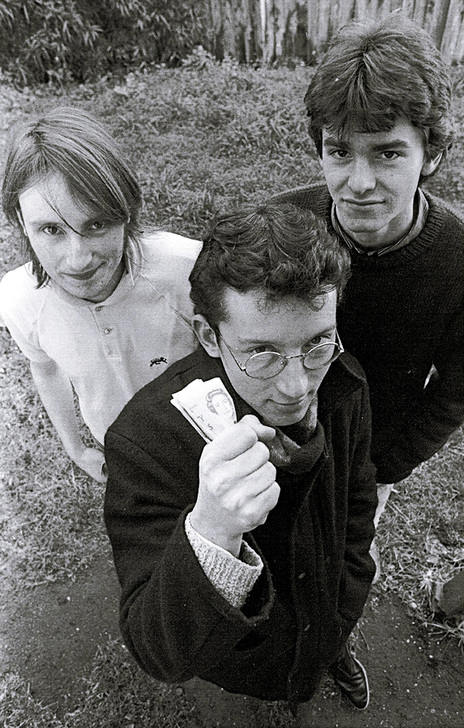
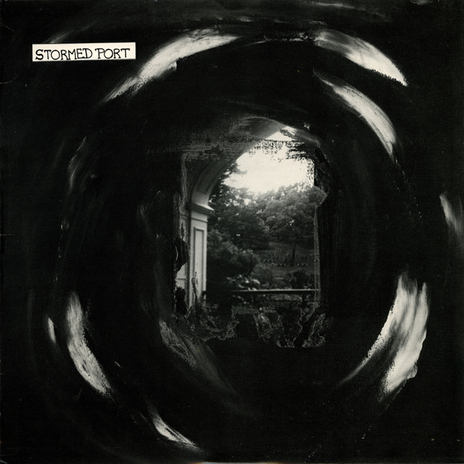
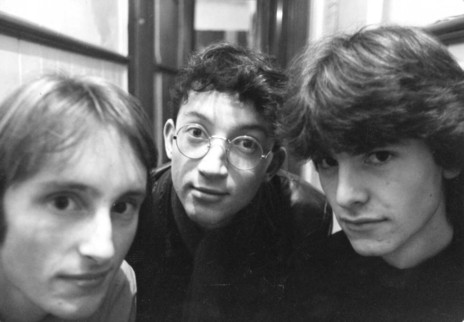
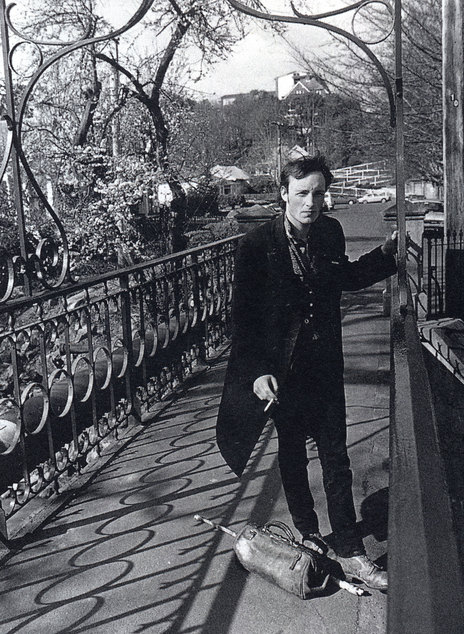
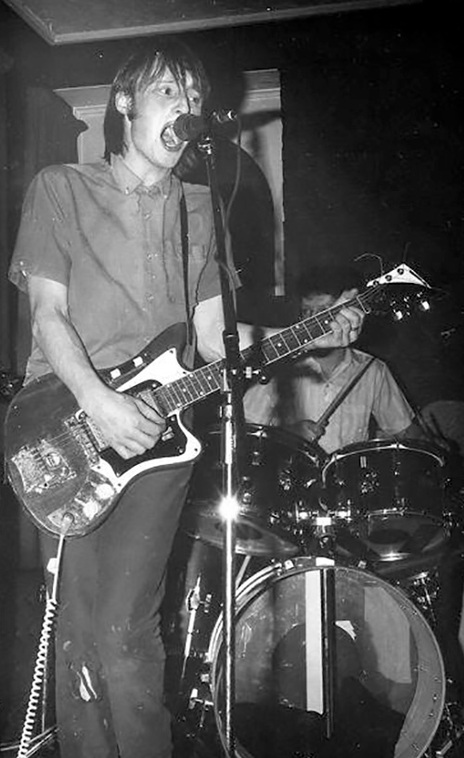
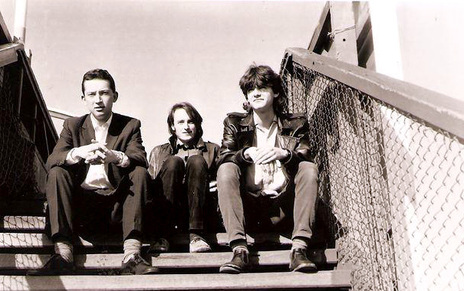
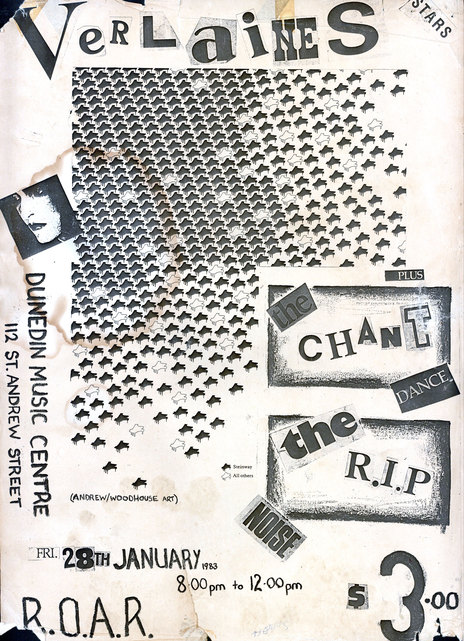
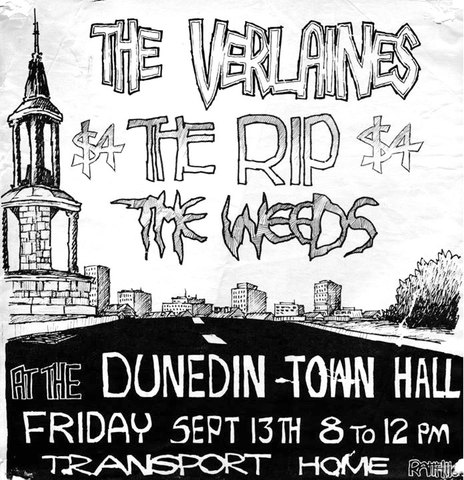
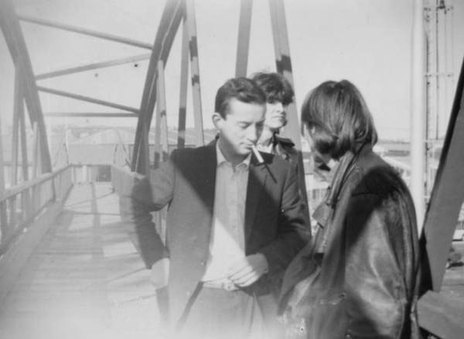
Alastair Galbraith - Vocals, Guitar
Robbie Muir - Bass
Matthew Ransom - Drums
Jeff Harford - Drums
Visit our sister site
NZ On ScreenMade with funding from
NZ On Air
